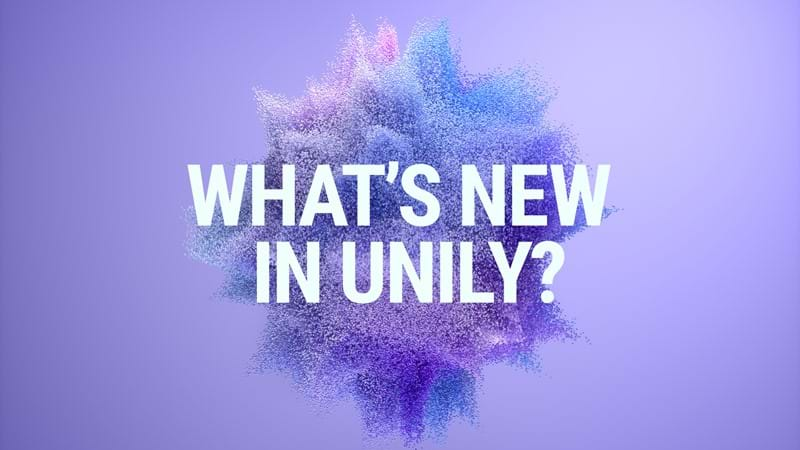Integrating external data and applications with Unily
One of the unique differentiators of Unily when compared to other product based digital workplace solutions is its inherent flexibility when it comes to customisation, extensiblity and integrating with data that resides within other line of business applications or external systems.

The primary reason for this is that Unily is designed, implemented and managed from the ground up, with no interdependencies on any other applications such as SharePoint.
Furthermore, by being fully hosted and built within the Microsoft Azure cloud, we have the ability to leverage Azure based services and components at our finger tips. This can help us build lean, yet powerful integrations, very quickly in an agile manner.
There are varying degrees of depth of integration and different types of systems that can be integrated with Unily, which can be categorised quite simply, as described below.
Office 365 Integration
Unily integrates with a vast proportion of Office 365 services out of the box. If an organisation is using Office 365, Unily can integrate with SharePoint Online, OneDrive for Business, Skype for Business and the Microsoft Graph.
If we take SharePoint Online as a specific example, not only can we surface documents stored in SharePoint within Unily, we also provide a security trimmed view of sites an individual user has access to. Furthermore, those sites can have a Unily look and feel applied to them, to provide seamless transitions to end users. It’s even possible to surface content created within the Unily CMS within a SharePoint site itself.
More recently, Unily has evolved to integrate with the Microsoft Graph, formerly known as the Office Graph and more commonly referred to as Delve. Native Unily widgets will surface “trending documents” based on API calls that are made against the Graph. For certain clients, we’ve taken this one step further and built custom widgets for specific needs where we have presented emails within a dashboard directly from Exchange linking through to Outlook and calling other Graph API endpoints such as group conversations.
Direct Links
By far the simplest, yet possibly one of the most effective ways to provide quick transitions to other applications that employees require to do their job. Unily’s out of the box intranet Apps and Tools feature allows the Intranet administrator to provide direct access to other applications within the enterprise that is accessible via a fully qualified domain name (FQDN). This can be taken one step further to target applications to users based on profile properties such as role, department or location.

Consuming from a custom data feed or end point
Many of our clients have niche requirements when it comes to external integration, often requiring integration with bespoke or in-house developed custom applications. Commonly the end goal here is to consume an existing data feed or end point.
Examples have ranged from consuming an XML data feed to display internal job vacancies through to issuing live queries to a securely hosted SQL Azure database pulling and presenting client data.
When the data feed or end point already exists it’s a really easy integration for us, which simply involves creating a widget to consume that feed, taking advantage of our re-usable framework. In some scenarios, presenting data within Unily isn’t enough on its own and it makes sense given particular use cases to actually write back to the existing data source or end point. Once again, this isn’t an overly complex task should the required end point exist.
In some cases, our clients do not have an endpoint in place, in which cases we will work together to define and implement an appropriate solution so that this type of integration can be implemented as efficiently as possible.
Writing to Unily Endpoints
Unily has been built in a way allowing its core capabilities to be easily extended. This applies to all capabilities across the board. Take Notifications as an example, as well as users being able to be notified on updates to content, information and people within Unily, custom notifications can easily be implemented to notify users of relevant tasks or updates triggered by external systems. Unily has the ability for its own endpoints to be written to by other applications. A good example of this is integrating with common business process workflows running outside of Unily. Take a SAP based absence leave request process as a specific use case. An endpoint within Unily can be called by the application’s workflow process to trigger notifications to be sent to users. In this specific case, the endpoint would accept some data against a URL whereby the message data can be transformed and generate appropriate notifications. For example the following types of messages could be accepted notifying the user of the outcome of a particular leave request based on his/her manager’s approval determination within SAP:
clientsite.com/api/notifications/holidayapproved?user=steve@client.com clientsite.com/api/notifications/holidaydenied?user=steve@client.com
Further to this we have the ability to update Unily’s user interface and functionality to allow users and content administrators to choose settings around these notifications to determine how and when they would appear.

Third party application integration
As touched on in the previous integration type above, Unily capabilities are designed with extensibility in mind. This allows for easy integration with other off the shelf products. Whether it be a documents solution such as Dropbox integrating with our Unily documents experience or Chatter becoming the default Unily social experience, integrating with established third party products with supported APIs is a common integration option.
Hybrid Search Integration
One of the most effective ways to surface enterprise content into a Digital Workplace solution is via a global search capability.
We’ve previously discussed how this is possible using the Office 365 SharePoint Online based Hybrid approach, to surface content from on-premises systems such as earlier versions of SharePoint, File shares or other line of business applications. Discover more details on the Unily Hybrid Experience.
As well as taking advantage of the Microsoft based approach, we’ve had a number of clients integrate an existing enterprise search engine within Unily. This approach involves issuing queries to the external search engine from the Unily global search area and then presenting search results from the external search engine within a Unily page, providing all the core capability of the enterprise search engine, within the context of Unily with the same look and feel.

To Summarise
To summarise, we’ve designed Unily to be a powerful platform that’s extensible and customizable. It’s these capabilities that make the solution so appealing to large enterprises, giving them a supported, rapid to deploy feature-full base from which to grow their digital workplace. With our dedicated consulting team supporting these customizations, we ensure every integration and customization we make works seamlessly, driving usage.
For more information on Unily’s customization options, please don’t hesitate to get in touch.
-
On-demand













